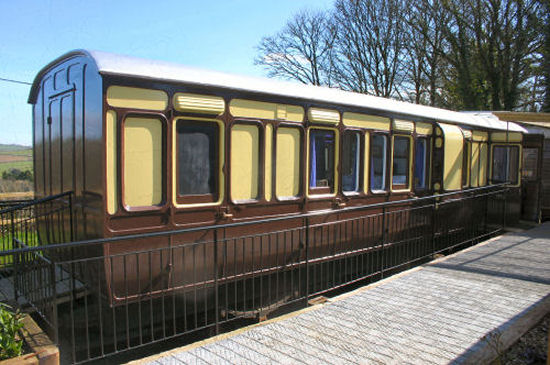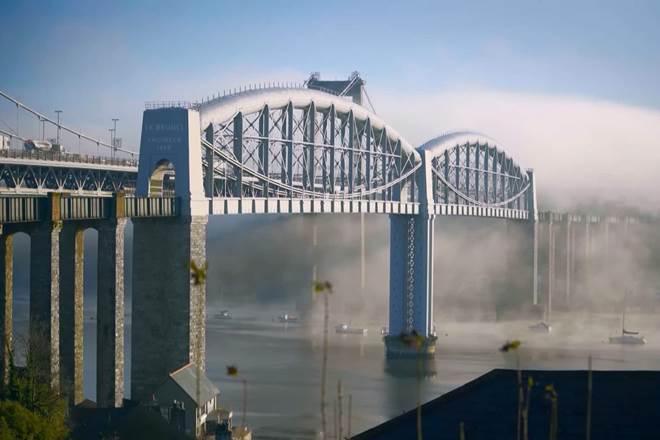The Architecture The Railways Built - Series 2 Episode 2
Watch the episode online here.
Royal Albert Bridge , Saltash, and the Rail Holiday carriages; Cornwall
A visit in three parts, this one! Firstly to see this extraordinary Brunel-designed bridge spanning the River Tamar on the border of Devon and Cornwall, with a Network Rail guide. So many of us have been over it on the train – but far fewer people go UNDER it on a boat to inspect it. You too can get boat tours under it with Plymouth Boat Trips, - and the bridge has its very own community website.
At the Cornwall end of the bridge is Saltash station: whilst the platforms have remained open, the Victorian-era station building has been derelict for years. That was until a local team got together with the local Saltash Town Council, bought the station building and brought a wealth of grant aid in to restore it. It’s set to be a true little community hub, with help from GWR and the Railway Heritage Trust, among others.
Just down the line at St Germans, there’s a passionately pro-rail couple: Lizzy and Dave, who occupy the old station buildings. The pair of them – with occasional help – have turned old wooden-bodied railway carriages into holiday homes. Rather like upgraded, deluxe versions of the “camping coaches” so popular across Britain until the 1960s! The whole site has been constructed and run on sustainable, eco-friendly principles – even using locally-sourced wood to refit the old carriages. What could be greener too – a holiday home next to a station, with all your days out accessed by regular local trains or walking. Just lovely. The team at Railholiday is well worth checking out.
Saltash station during renovation
Saltash station before renovation
One of the Railholiday coaches to sleep in
Wolverhampton station
The old and the new were explored here. Wolverhampton used to have two stations (High and Low Level) but one original building remains, down at Lowe Level. With the tracks removed, and converted into a fab venue for weddings and events, it has nothing to do with the railway now. It has a superb interior – and you can learn about the building as "Grand Station" – and book it, here.
The other was replaced in the 1960s with a somewhat brutalist station building as part of British Rail’s Modernisation Plan which has, in turn, been replaced just this last year by a new, modern, striking building as a new gateway to Wolverhampton. The new building caters for the massive numbers of people using the station now – far more than the old buildings were ever designed for.
Whilst it isn’t as ornate as the original, it’s certainly fit for purpose. Kudos to the architects Austin-Smith:Lord behind the development for future-proofing it for future expansion too, whilst keeping trains running through construction as much as possible. The colours of the station are probably familiar to many locally – they’re inspired by the kit of nearby Wolverhampton Wanderers!
Gallivare station in Sweden
This station is high in the Arctic Circle and was built to serve the huge iron ore mines of the frozen north and continues to service the mining industry today. The town mushroomed when the train arrived - but the intense mining means large sections of the neighbouring town are collapsing into the earth. That meant the whole town needs to be moved! Fun fact: the reason all the doors in the station here (and indeed most houses too) open outwards is so that a small avalanche of snow doesn’t come crashing indoors every time you do it. Smart, eh? Want to get there? Check out Routes North.
Watch the full episode of The Architecture The Railways Built - Series 2 Episode 2 - online here.
